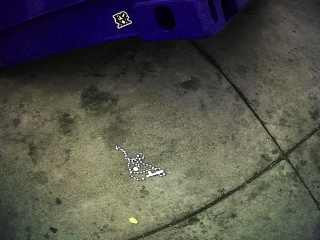Francisco Miraval
You never know how much garbage there is out there until it is your turn to go and pick it up. And you never know what you could find when you are picking up garbage. In this case, it was a broken cross and a discarded chewing gum under a blue metal container at a small square near downtown Denver.
It was an easy task. So easy that there were no instructions, except the date, time, and location of the activity. When I arrived, they gave me a plastic dust bin, a broom, and blue plastic gloves. The project coordinator, without saying a word, traced an imaginary semicircle with his extended arm and pointing finger, thus delineating the area I was asked to clean.
There, under a huge blue, metallic container –like those used to carry cargo on ships or trains–, I found a broken white cross, very close to a discarded chewing gum.
Why the cross was there? What kind of stories were thrown away or forgotten with that cross? And why the cross was missing an arm? Perhaps the cross fell from the pocket of one of the homeless person sleeping under the container. O perhaps, due an accident or an incident, the cross lost one of its arms and its owner decided to throw it away.
Which arm of the cross was missing, the right one or the left one? In other words, did the cross lose its justice or its mercy (according to the old tradition of identifying justice and mercy with the two hands)?
Perhaps the missing arm of the cross –we do not know which one– is just a reflection of a society that, in many cases, also losing its sense of justice and mercy. Perhaps the owner of the cross understood that he was surrounded by injustice and unmercifulness, and therefore he abandoned the cross, thus also abandoning his hope and his dreams.
It was just a plastic cross. Nothing special. There are countless numbers of similar crosses. It was not an irreplaceable work of art. However, the wearer of the cross, whether he lost it or abandoned it, is irreplaceable and unique, just because he is a human being.
And what about the discarded chewing gum? Perhaps that was the only meal of the cross-wearer that day. Or perhaps it was his dinner, trying to keep his mouth busy to forget about an empty stomach.
But perhaps the cross and the gum began as two different stories united by the blue container, transformed into a public art display in the middle of the small square, but used as protection by homeless persons. Perhaps somebody shared the only extra food he had, the gum, and, in return, he got the only gift the other person could give, the cross.
Among countless cigarette’s butts, broken glasses, old wrappers, and fragments of unknown elements, the cross, the container, and the chewing gum still tell a story, the same story day after day after day.


Comments
There are currently no blog comments.